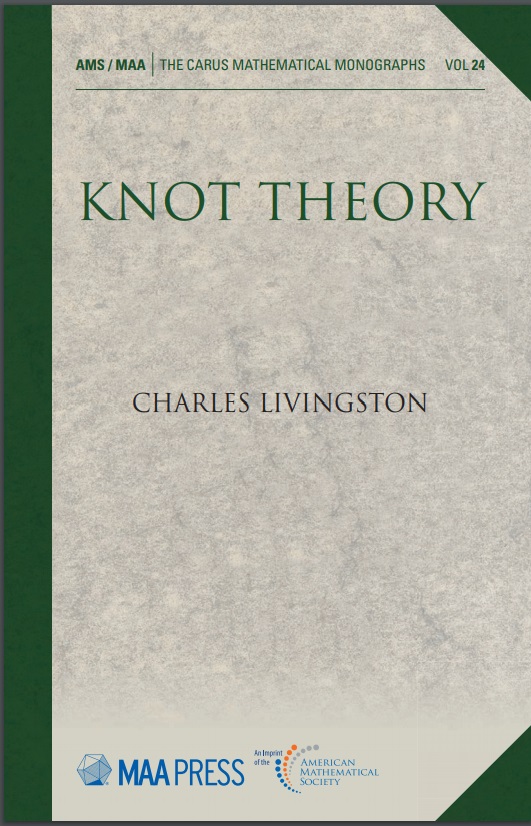

Copies of the classnotes are on the internet in PDF format as given below. The "Proofs of Theorems" files were prepared in Beamer. The "Printout of Proofs" are printable PDF files of the Beamer slides without the pauses. These notes and supplements have not been classroom tested (and so may have some typographical errors). ETSU does not have a formal class on knot theory, but these notes may be used in an Independent Study (MATH 4900) or as a supplement to Introduction to Topology (MATH 4357/5357).
These notes are based on Charles Livingston's Knot Theory book. The book is a bit informal and, in these notes, some claims are not proved but instead justified with statements like "Livingston claims..." Such claims are sometimes justified by referencing sources which provide detailed proofs. There are also some typographical errors in the Livingston book and the known errors are corrected in these notes.
Notes are in preparation for a more rigorous class in knot theory. See my online page for Graduate Knot Theory Class Notes based on W. B. Raymond Lickorish's An Introduction Knot Theory, Graduate Texts in Mathematics 175, (NY: Springer-Verlag, 1997).
Chapter 1. A Century of Knot Theory.
Chapter 3. Combinatorial Techniques.
Chapter 4. Geometric Techniques.
Chapter 5. Algebraic Techniques.
Chapter 6. Geometry, Algebra, and the Alexander Polynomial.
Chapter 7. Numerical Invariants.
Chapter 8. Symmetries of Knots.
Chapter 9. High-Dimensional Knot Theory.
Chapter 10. New Combinatorial Techniques.
Appendix 1. Knot Table. The Rolfsen Knot Table on The Knot Atlas page includes images of all knots with 10 or fewer crossings (accessed 2/25/2021). Livingston's book has images of all knots with 9 or fewer crossings in its Appendix 1.
Appendix 2. Alexander Polynomials. Alexander Stoimenow has an online Table of Alexander Polynomials for all knots with 10 or fewer crossings (the notation is explained here; accessed 2/25/2021).
Return to Bob Gardner's home page